Ming Wah Dai Ha Enlivened by Lion Dance during Chinese New Year
Ming Wah Dai Ha Enlivened by
Lion Dance during Chinese New Year
Hui Ka Hung
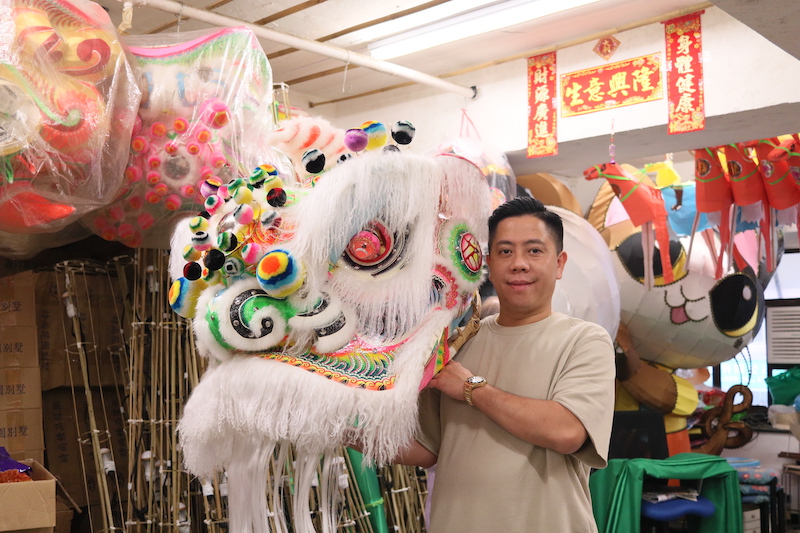
Hui Ka Hung works tirelessly every year to organise Tam Kung’s Birthday celebrations in Shau Kei Wan. He is also a renowned local master of lion head making.
On the eighth day of the fourth lunar month, Ming Wah Dai Ha comes alive buzzing with excitement and festivity. The estate is filled with the sound of gongs and drums early in the morning as residents enjoy a lively lion dance parade celebrating Tam Kung’s Birthday from their windows. Underneath the lion’s head and tail once stood a young boy named Hui Ka Hung. He grew up in Shau Kei Wan and even though he did not live in Ming Wah, he would visit the estate every year to participate in the lion dance, forming a strong bond with this community. Now in his early 40’s, Hui has come a long way from being a young lion dancer to a capable adult who works tirelessly every year to organise Tam Kung’s Birthday celebrations in Shau Kei Wan. He is also a renowned local master of lion head making.
Hundreds gather in Shau Kei Wan to go under the dragon belly and pray for good fortune
“Back in the day, Shau Kei Wan was a hub of martial arts establishments, set up mostly on rooftops where loads of space were available for use rent-free,” recalls Hui. Despite being raised in a martial arts family and surrounded by antennas, sandbags and plum blossom piles as a child, Hui did not get passionate about martial arts. Instead, he was fascinated with lion dancing. He would often run through the streets to watch lion dance performances outside the neighbourhood welfare association. Noticing his fascination, the master invited him to join the lion dance troupe.
“As a kid, I used to get so excited about Tam Kung’s Birthday that I couldn’t sleep for the entire month before it.” Back then, he did not know that Tam Kung was the God of stonemasons. All he knew was that on the day of the festival, he would be able to touch the beautiful lion head and see all the masters at work. “There are many martial arts schools in the district, and a lion dance team was dispatched by each establishment. The whole of Shau Kei Wan was filled with lion dancers and sometimes onlookers lined up all the way to Sai Wan Ho.” Many shops hung lettuce high up as a symbol of wealth and good business for a lion dancer to pick up on a shoulder ride, which never failed to bring a smile to the shopkeepers’ faces.
The highlight of Tam Kung’s Birthday celebration was “Going under the Dragon’s Belly.” The dragon dance that took place on the streets of Shau Kei Wan was a sight to behold. Dozens of people worked together to control the dragon’s movement, watched in awe by neighbours lining both sides of the street. Grandmothers held their grandchildren and mothers held their daughters as everyone eagerly awaited the special moment when the dragon stopped and the neighbours rushed out to go under its belly. It was like a game where people have to weave in and out between dancers. Grandmothers hoped for their grandchildren to grow up quickly, while mothers hoped for their daughters to get married soon. Hui vividly recalls the spectacular moment when hundreds of neighbours were all going under the dragon’s belly at once. Many would even pull out the dragon’s beard as a good luck charm on a day full of positive vibes across Shau Kei Wan.
Dancing into Ming Wah and handing out “God of Wealth” red paper strips
Hui always passed through Ming Wah Dai Ha while performing lion dance. During the Lunar New Year, he even made his way to the estate on purpose to practise the Chinese custom in which children hand out small red paper strips each written with the Chinese characters meaning “God of Wealth”. “We wrote ‘God of Wealth’ on red paper and got together with our fellow apprentices. We wore the lion head and knocked on the doors of the flats in the estate with drumsticks while shouting ‘Happy New Year’. When the elderly saw that we were kids, they would give us 10 or 20 dollars.”
Hui often went to Ming Wah Dai Ha to dine with his fellow apprentices living there. When there were too many people, they took tables out from their homes and set them up in the corridor to chat. “The view there was amazing,” Hui said. For him, Ming Wah Dai Ha was not only a place to collect red packets but also a place to eat and play. “The estate used to have a cha chaan teng which I visited frequently.” Hui recalls memories of a little hill located above A Kung Ngam Road where he as a mischievous child used to play with a few friends. They would splash around in the water and play with animals, creating many childhood memories.
As an accomplished master, Hui’s craftsmanship has become unparalleled. His works can be seen in traditional festivals, memorial sites, waterfront promenades, and even the Golden Dragon Museum in Australia. As time goes on, the grandeur of the Tam Kung’s Birthday parade has gradually faded, but the festival and lion head making have stayed on as “part of Hui’s life”. So on the eighth day of April of the lunar calendar every year, he still puts in his best effort to help stage a festive celebration that belongs to Shau Kei Wan.
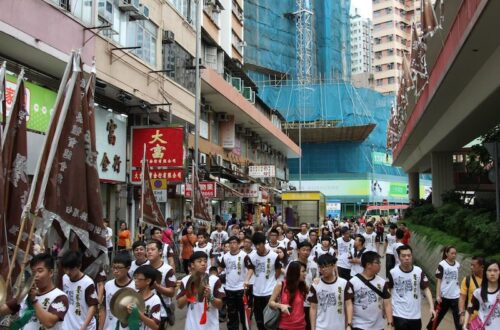
Dozens of people worked together to control the dragon’s movement on the streets of Shau Kei Wan.
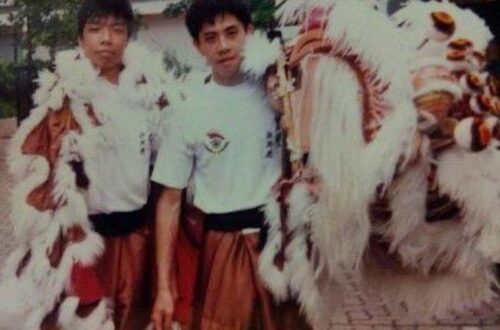
When Hui (right) was younger, he “counted down the days to Tam Kung’s Birthday.”
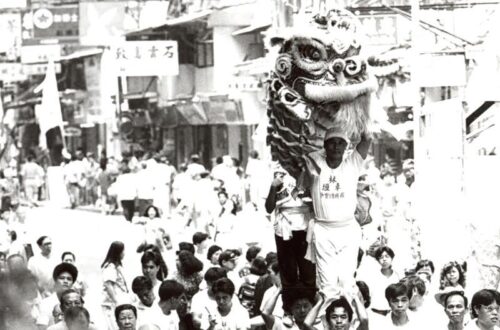
.Shau Kei Wan Tam Kung’s Birthday celebration in 1976. (Provided by The University of Hong Kong Libraries)
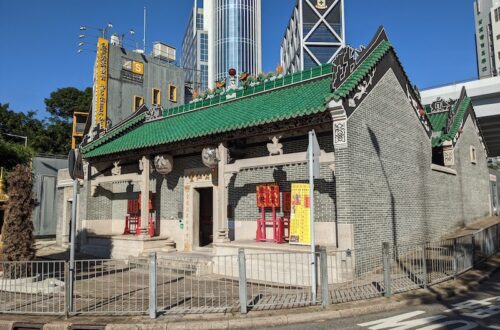
The older generation in Shau Kei Wan believes that the local community was protected by Tam Kung from harm during the cholera outbreak in Hong Kong in the 1930s. The picture depicts the current location of Tam Kung Temple.
Connection to Ming Wah Dai Ha: Hui grew up in Shau Kei Wan and was part of the team that organised the most significant festival in the neighbourhood -Tam Kung’s Birthday. The lion dance parade always passed through Ming Wah Dai Ha.
細説明華
Ming Wah Dai Ha
Documentary Project
Copyright|Disclaimer | Contact us
Organiser|Hong Kong Housing Society
Collaborator|Dragon Foundation、Lion Head Culture、Hide and Seek Tour
Copyright © 2024 Hong Kong Housing Society. All Rights Reserved.
細説明華
Ming Wah Dai Ha
Documentary Project
Copyright|Disclaimer | Contact us
Organiser|Hong Kong Housing Society
Collaborator|Dragon Foundation、Lion Head Culture、Hide and Seek Tour
Copyright © 2024 Hong Kong Housing Society. All Rights Reserved.